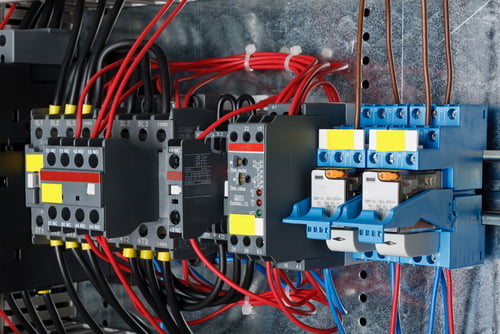4 Tips for Enclosure Cooling
 Proper electrical enclosure cooling is essential for preventing damage to sensitive equipment due to excess heat. Higher temperatures in an electrical enclosure can result from heat sources within the enclosure, ambient conditions outside the enclosure, or both. Regardless of the heat sources, if measures are not taken to lower the temperature, the risk of equipment failure increases.
Proper electrical enclosure cooling is essential for preventing damage to sensitive equipment due to excess heat. Higher temperatures in an electrical enclosure can result from heat sources within the enclosure, ambient conditions outside the enclosure, or both. Regardless of the heat sources, if measures are not taken to lower the temperature, the risk of equipment failure increases.
Selecting a system for electrical enclosure cooling is not always a simple process. Some applications require more advanced systems that protect equipment from the surrounding environment, while others need only a simple fan to draw heat away from the components in the enclosure.
4 Tips for Electrical Enclosure Cooling
Follow these electrical enclosure cooling tips to ensure that you protect your equipment and employees:
- Understand the NEMA rating – Electrical enclosures have NEMA ratings that are based on factors such as exposure to dust or other airborne contaminants, water, and corrosive materials. The NEMA rating of the enclosure will help inform what type of cooling system is appropriate for your application.
- Calculate the heat load – The amount of heat generated both inside and outside the enclosure will contribute to the overall heat load that the cooling system must accommodate.
- Select the right type of cooling system – The NEMA rating of the enclosure and the heat load of the system will inform whether you can use an air conditioner, a heat exchanger, or a basic filtered fan. Consider whether you need to protect the components from dust or water, and what temperatures you can expect the equipment to be exposed to when making your decision.
- Select an appropriately sized cooling system – After deciding what type of cooling system makes the most sense, you must select a model based on specifications such as cooling capacity and size. The cooling system must physically fit on the enclosure, so you may need to explore smaller units in some cases. You must also be careful to select a cooling system that is neither undersized nor oversized, as either of these scenarios can be problematic.
For more tips on enclosure cooling, or to get help with selecting the right cooling system for your application, contact the experts at Thermal Edge. We provide a BTUH calculator so you can determine the heat load of your enclosure and the corresponding required cooling capacity for your new system. Get in touch with us today to get started.

